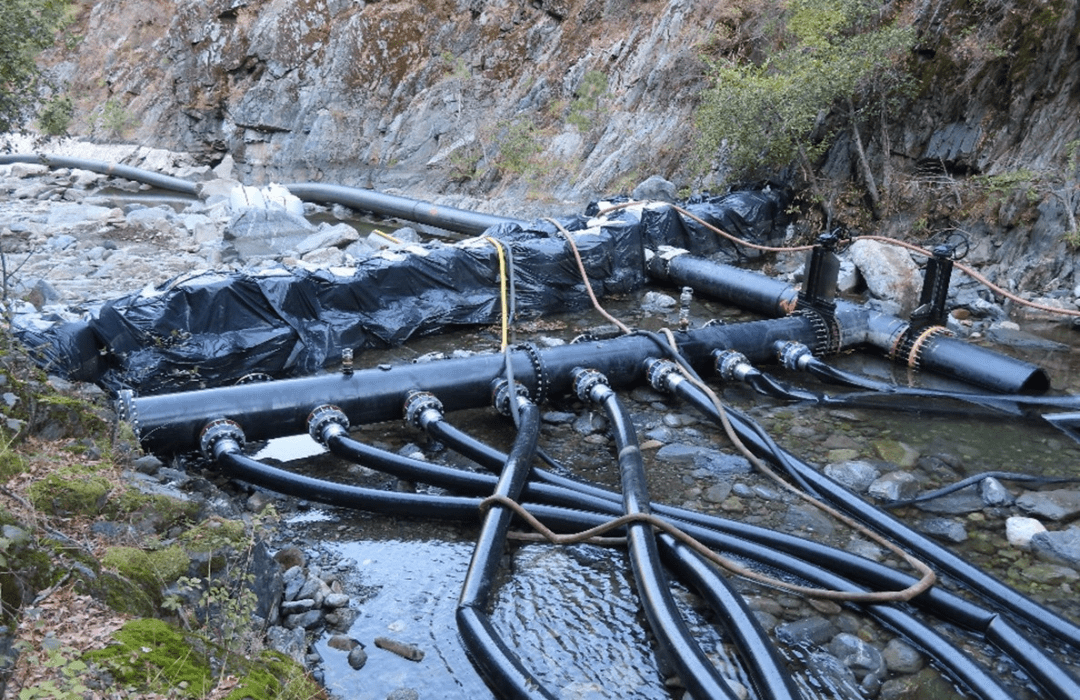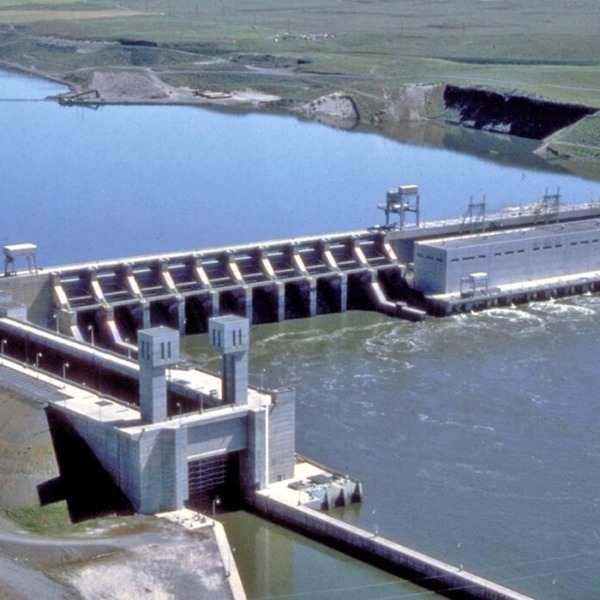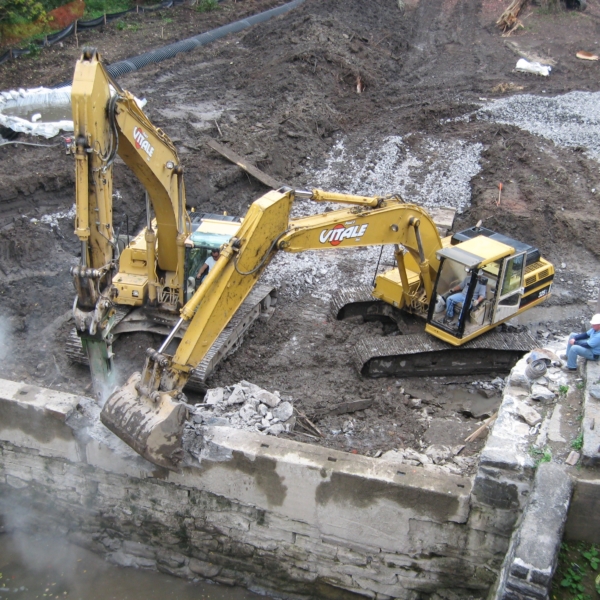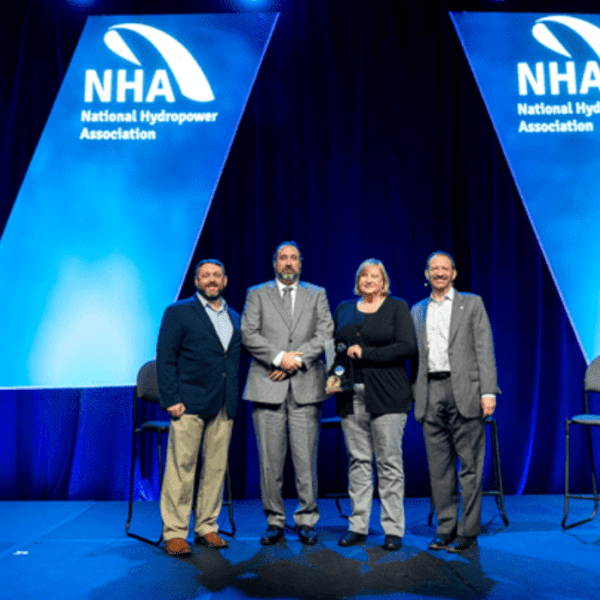Sponsored Content
Diverting water around or through your hydropower construction project often leads to safety risks, increased costs, and schedule delays — but it doesn’t have to. The purposes of water bypass methods are to facilitate work in a dry environment, maintain hydropower generation downstream, and address environmental concerns. Like the challenges they are created for, these solutions are not one-size-fits-all. Identifying the best solution to manage and remove water is critical for the safety and success of your project.
WHAT ARE THE PRIMARY WATER BYPASS METHODS?
Bypassing large volumes of water can be achieved in a variety of configurations but can generally be categorized into three primary methodologies. Choosing the best method for your project depends on site topography, water flow volume, and site space constraints. The three main water bypass methods are compared and summarized as follows:

Gravity Flow System: This method is ideal when the water source is a river or impounded reservoir at a sufficient height above the target discharge location. Implementing a gravity flow system is the simplest and most cost-effective solution but can only operate with a limited range of head and flow requirements.
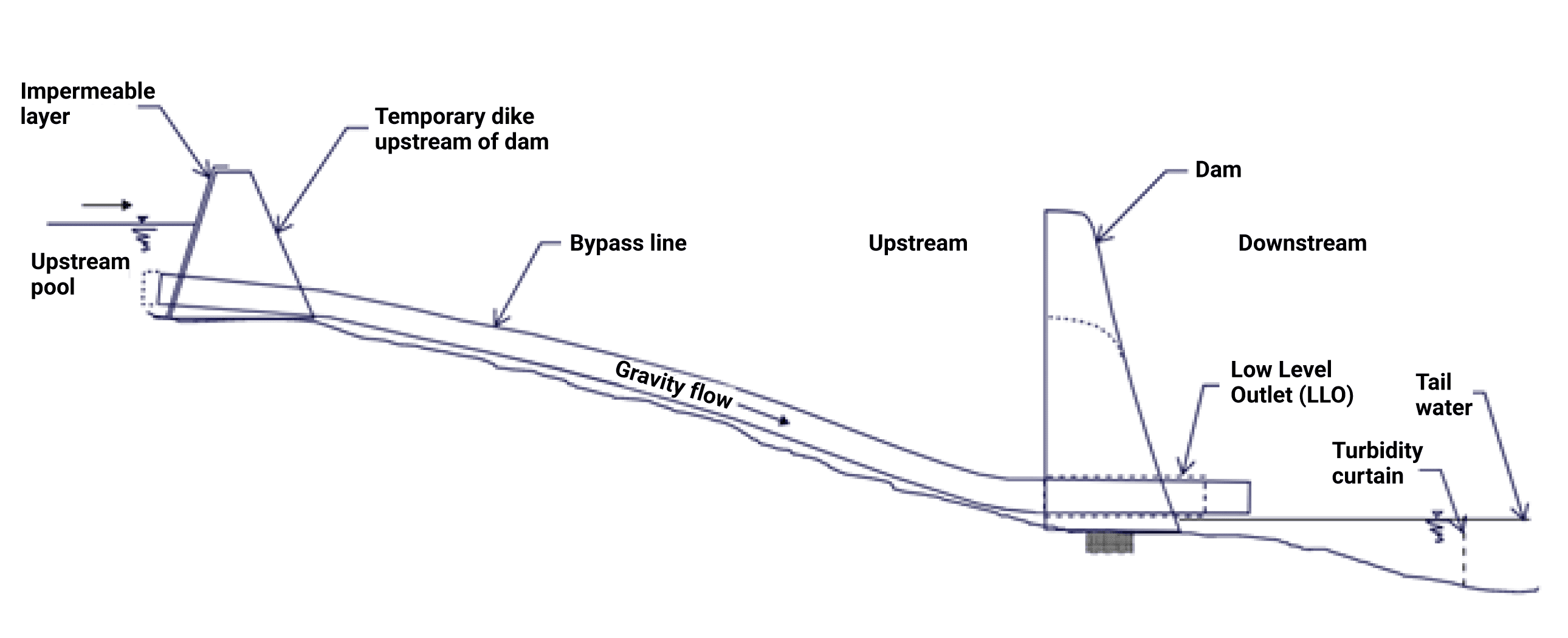
Pumped Flow System: This method is suitable when the water source is not high enough above the target discharge location to allow for sufficient gravity flow, on sites where the grading varies over a long distance, and in cases when complex routing is required. The pumped flow solution is the most flexible for head and flow ranges, but the maintenance required to ensure this flexibility is costly.
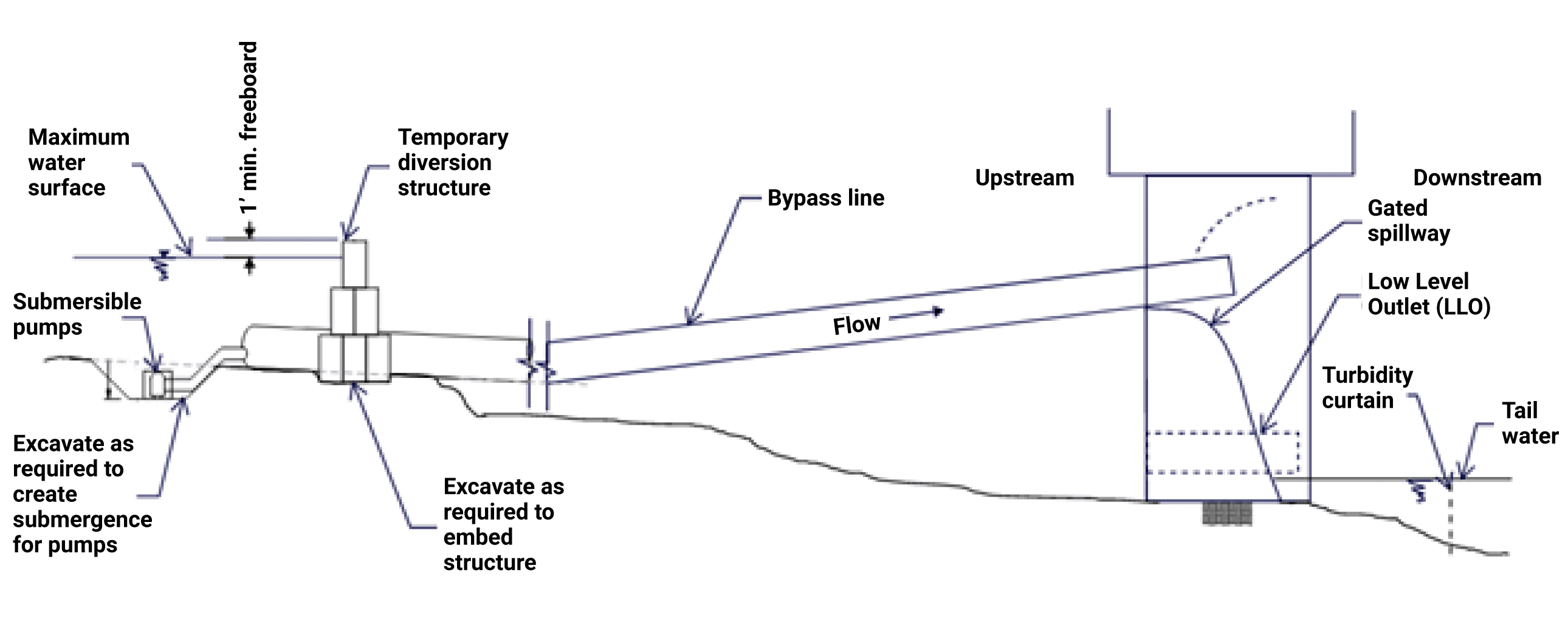
Siphon Flow System: This method is best in simple routing cases when moving water from an elevated impounded reservoir. Siphon flow systems are more flexible than gravity flow systems in terms of head and flow ranges but require sufficient priming and monitoring to ensure reliability.
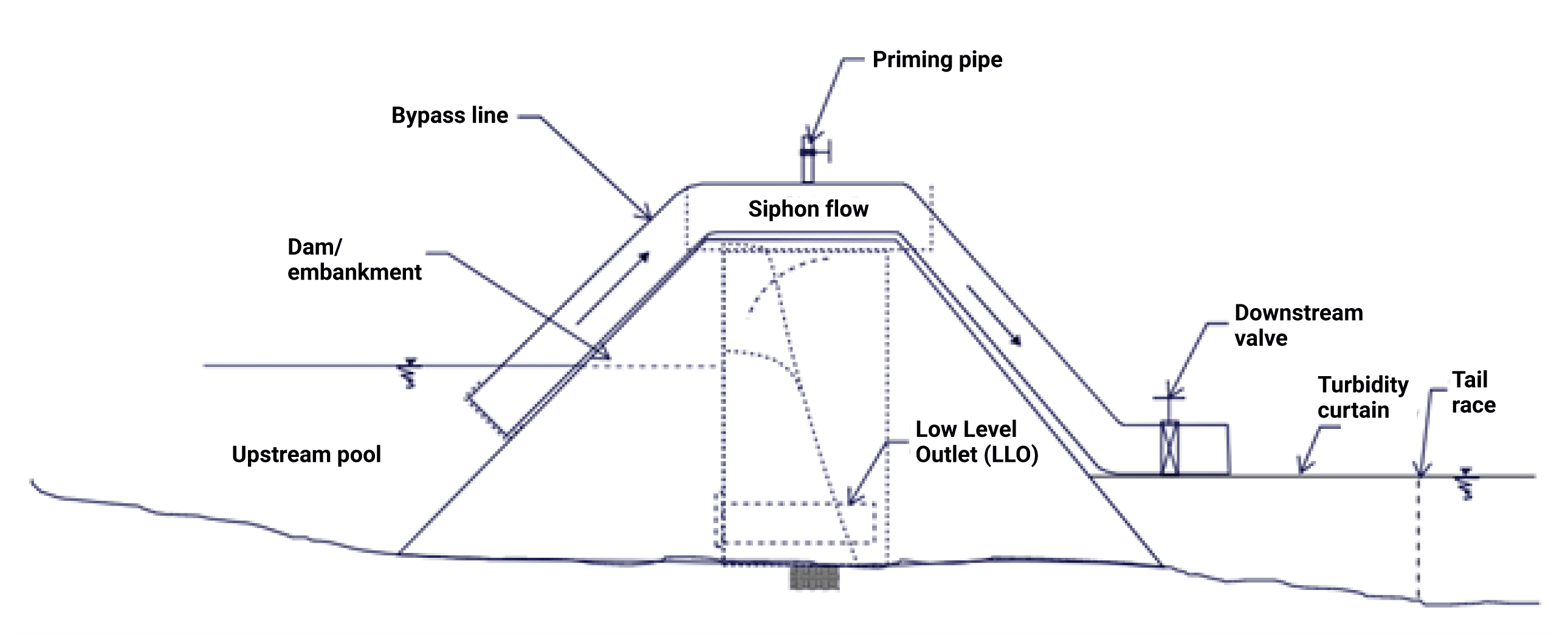
HOW HAVE THESE BYPASS METHODS BEEN SUCCESSFULLY IMPLEMENTED ON CONSTRUCTION PROJECTS?
The following three case studies summarize successful implementation of each primary water bypass method described above. For each project, the optimal bypass system type was selected based on a variety of factors including site conditions and water flow in cubic feet per second (CFS).
Placer County Water Agency Middle Fork Interbay Dam Sediment Removal
- Bypass system type: Gravity flow with pumped flow option
- Instream bypass requirement: 80 CFS based on 10-year flood event (has a 10% chance of occurring in any given year)
- Scope: 80,000 cubic yards of dry sediment removal
Why this bypass method was the best choice: The reservoir needed to be completely empty for sediment removal. The pumped system allowed initial reservoir drawdown until the less costly gravity system could be implemented during construction to keep the reservoir dry.
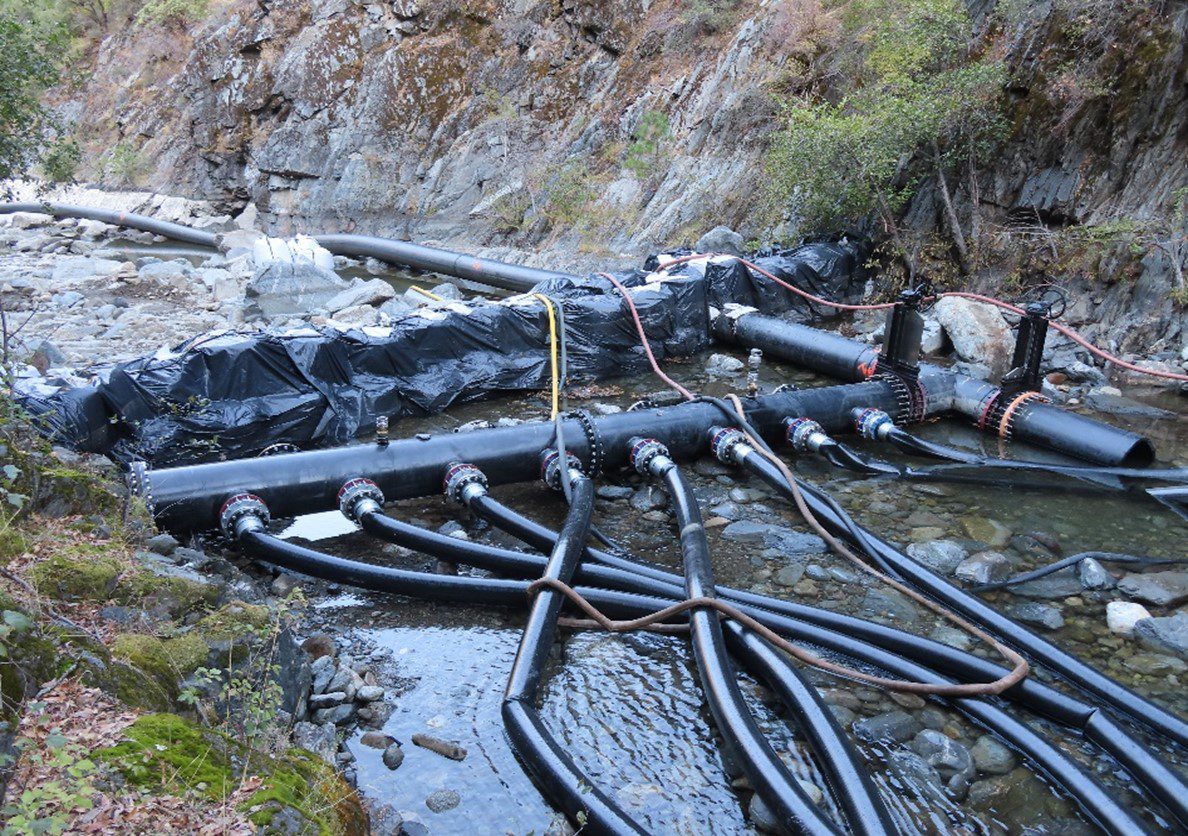
Pumped manifold and gravity intake upstream from Interbay Dam.
Yuba Water Agency Our House Dam Water Bypass System
- Bypass system type: Pumped flow
- Instream bypass requirement: 35 CFS based on 10-year flood event
- Scope: 100,000 cubic yards of dry sediment removal
Why this bypass method was the best choice: The reservoir needed to be completely empty for sediment removal, and the pumped system allowed uninterrupted bypass throughout construction. Due to the outlet works configuration, a transition to gravity flow was not feasible.
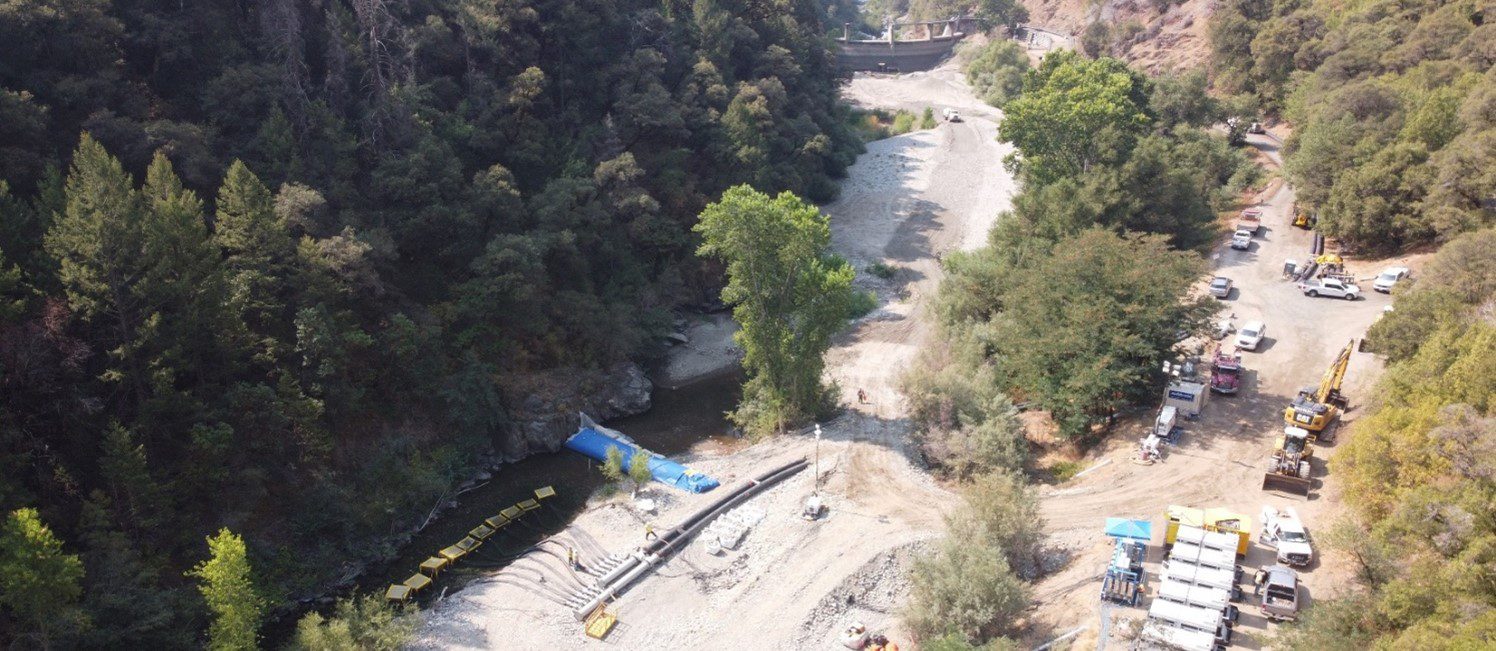
Discharge pipes downstream of Our House Dam, including discharge baffles and backflow prevention barrier.
PG&E Pit 1 Dam Low Level Outlet and Radial Gate Retrofit
- Bypass system type: Siphon flow
- Instream bypass requirement: 200 CFS based on instream flow requirements in addition to water rights downstream
- Scope: LLO gate replacement and radial gate maintenance including seals and coating
Why this bypass method was the best choice: The site topography was well-suited for siphons, requiring a much smaller footprint than using pumps. It also significantly reduced energy, fuel, and monitoring needs.
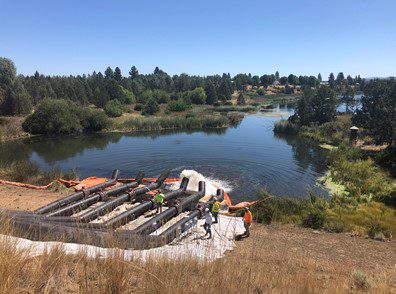
Siphons in operation over Pit 1 Dam embankment into stilling pond; flow monitoring equipment and turbidity curtain shown.
WHAT LESSONS CAN BE APPLIED TO FUTURE DEVELOPMENTS OF WATER BYPASS SYSTEMS?
Although water bypass methods are unique to each project, they share some common themes that are relevant to all hydropower construction. Based on decades of experience, the Black & Veatch team has identified the following key concepts to consider when developing safe and efficient water bypass systems on your construction projects:
- Solve problems creatively. You don’t have to adhere to one single water bypass method. Consider configurations of all three systems to meet your unique project needs at different times of construction. It also may benefit your project to install a permanent water bypass system in locations with high dewatering frequency.
- Allow for adequate permitting time. Identify activities that can be completed prior to or without implementation of the water bypass system to optimize your project schedule. Negotiate your rainfall permit requirements ahead of time to decrease the likelihood of having to pause construction operations following storm events.
- Mitigate cost impacts due to project delays. When operating and maintaining a large-scale facility, even minor schedule delays can have significant budget impacts due to staffing, fuel costs, and equipment rental fees. Consider pre-assembling project components prior to your facility outage and allow opportunities to adapt the water bypass system as needed if conditions change.
- Collaborate with on-site teams. Coordination with the facility operations and maintenance team will enable construction activities to be performed concurrently, maximizing the amount of work completed.
- Implement robust backup procedures. Have a strategic monitoring plan in place before beginning construction, and plan for excess flow events exceeding your water bypass capacity. Ensure an appropriate level of system component redundancy including pumps, pipes, and generators.
Black & Veatch has completed over 500 hydropower and hydraulic structures projects, generating more than 64,000 MW of renewable energy worldwide. Learn more about Black and Veatch’s expertise and connect with them about your next project here.



